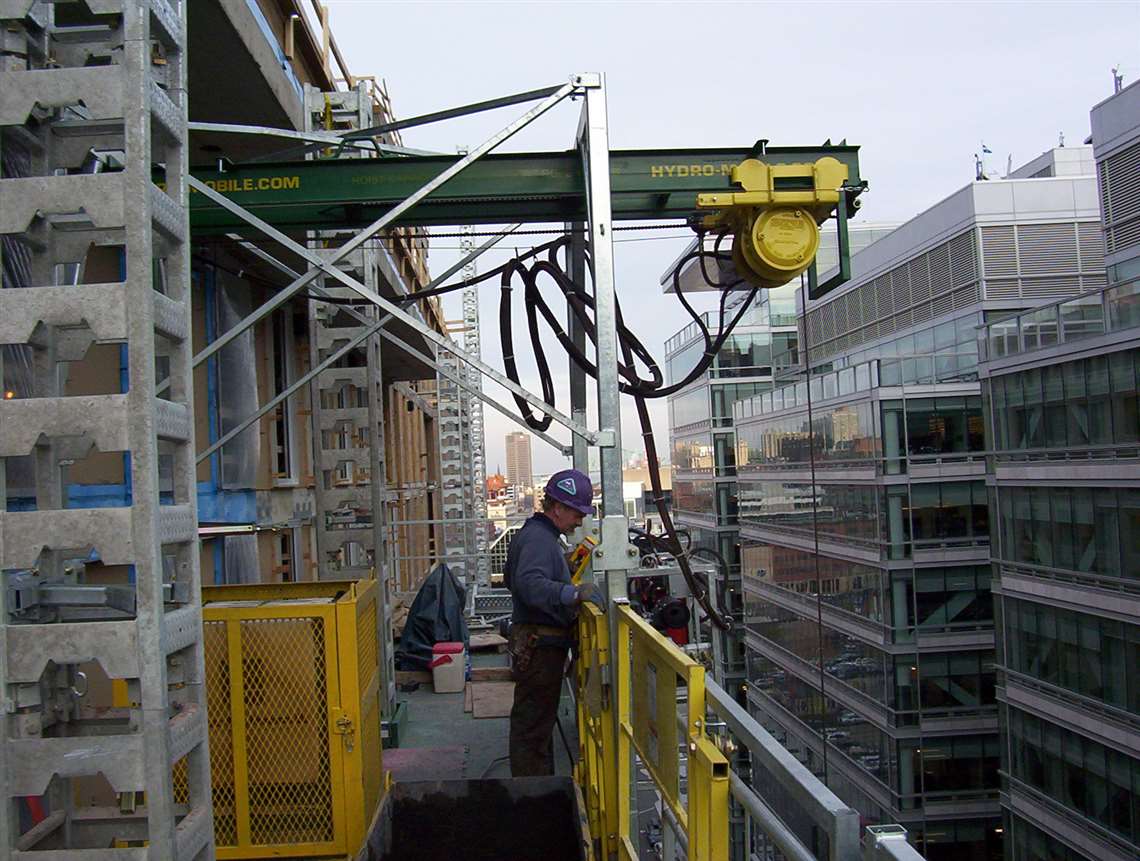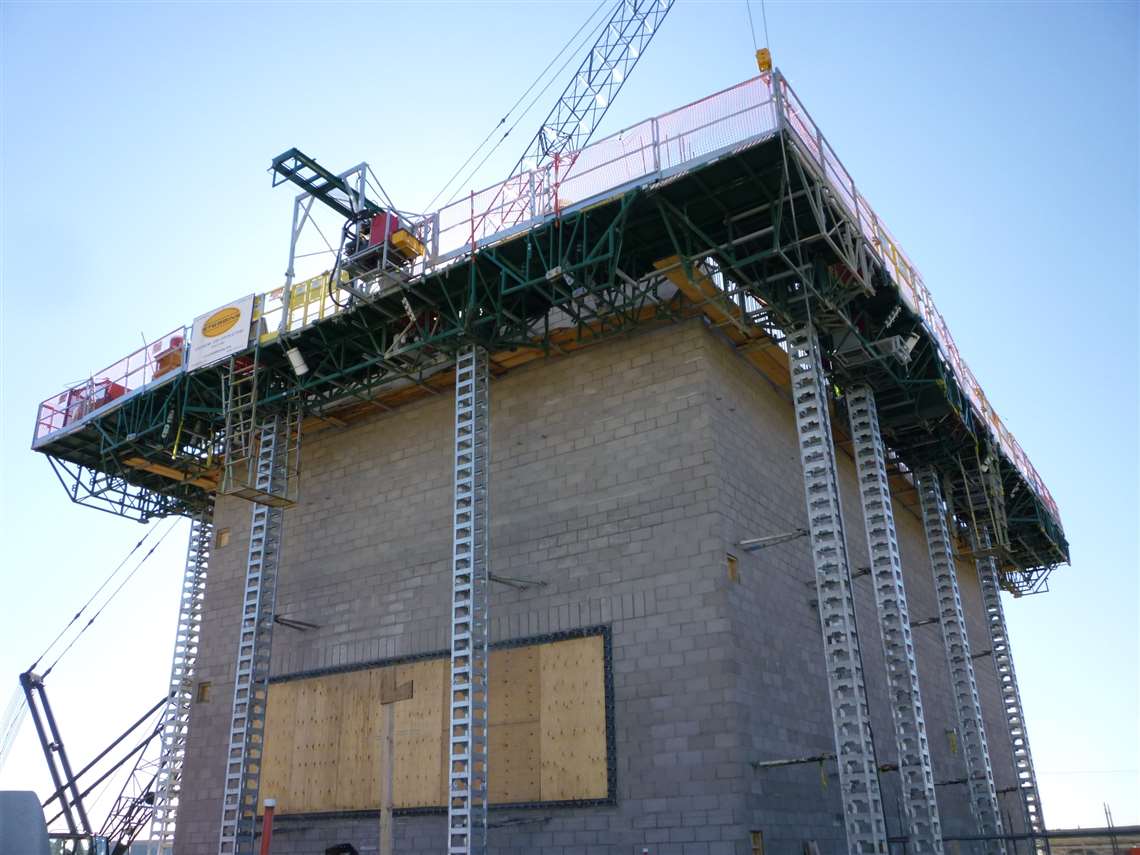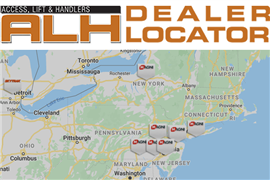Material hoists on mast climbers
April 20, 2021
Mast climbing work platforms (MCWPs) have made immense contributions to safety and productivity in a number of construction trades and working environments.
The ability of heavy-duty MCWPs to provide a stable working platform at height for masons coupled with the ability to lift serious quantities of brick, block and related materials had a transformational effect.
Similarly, the medium/light-duty MCWPs ability to position personnel, equipment and material at height, and its high travel speed provide the ideal working environment for the application of stucco/EIFS, glass, curtain-walling and related weather-proofing/façade work.

As the product use developed, additional equipment was invented to further enhance the productivity, safety and profitability aspects of use. A significant example of this is the MCWP material hoist.
MCWP material hoists
Mounted on the platform, the hoist has become a valuable tool. Able to lift up to 4,000 pounds of material in a single lift and place it on the platform while at height, it has a number of significant advantages:
- The platform does not have to descend to the ground in order to replenish construction materials (e.g. brick, block).
- Productivity can continue, e.g. masons can continue to lay brick/block while the tenders hoist more material up into the working area.
- It’s typical for the platform to remain in the raised position for many days, with materials fed to the platform by the hoist, until the whole elevation is complete.
- Hoist capacity can be adapted to the application. A 4,000-pound-capacity hoist is typically used for masonry work, and the lower capacity hoists, which can lift up to 2,000 pounds, are more suitable to the stucco/EIFS industry.
There are additional considerations to hoist use, and when planning a project it is critical to keep these in mind:
- The hoist will add weight to the MCWP, so there will generally be a reduction in the platform capacity. This needs to be fully evaluated with respect to productivity and work-flow.
- The hoist needs to be specific to the MCWP model. Close collaboration with the MCWP manufacturer is vital. The method of securing the hoist to the platform, the revised capacity of the platform, the configuration of the platform and potentially the tying-in method and specification, are all examples of revised information and guidance that needs to be provided by the manufacturer.
- Training is a must. Nominated hoist operators in the platform need to be trained in safe use. All other personnel need to be trained to know where they can and cannot stand during loading/unloading, they need to be aware of any fall protection measures and they need to be under the direction of the hoist operator during lifting operations.
- There should be cordoned-off lifting/loading zone on the ground signed and barricaded to prevent encroachment.
- The personnel on the round need to be trained to manage the loading/unloading process, to manage the lifting/loading zone and to communicate effectively with the hoist operator above.
Rigging and signaling

Although these hoists are NOT covered by the requirements of the OSHA Regulations for Cranes and Derricks in Construction, there IS a responsibility to adhere to rigging and signaling requirements.
Vital questions to ask during planning for use are potentially the same questions personnel will be asked by either an OSHA Inspector or a GC Safety Officer:
- What is the capacity of the hoist you’re using?
- What is the weight of the heaviest object(s) you’re lifting?
- What is the capacity of the slings you’re using (remember that sling capacity varies, e.g. straight, choker or basket sling configurations will result in different sling capacities.)
- Who inspected the slings (e.g. wire rope slings have broken wire rules, all slings must have a tag etc.)
- How will the personnel on the ground communicate with the personnel in the raised platform?
- Is a spotter required?
- What is the ‘lifting procedure’ and are all personnel aware of it? (e.g. through training/tool-box-talks)
Material hoists are a fantastic complimentary tool for MCWPs but there is a requirement for careful consideration, preparation and implementation.
Work closely with the manufacturer, make sure personnel are appropriately trained, know the rules, and reinforce safe use through additional training and/or tool-box-talks.
STAY CONNECTED



Receive the information you need when you need it through our world-leading magazines, newsletters and daily briefings.
CONNECT WITH THE TEAM









